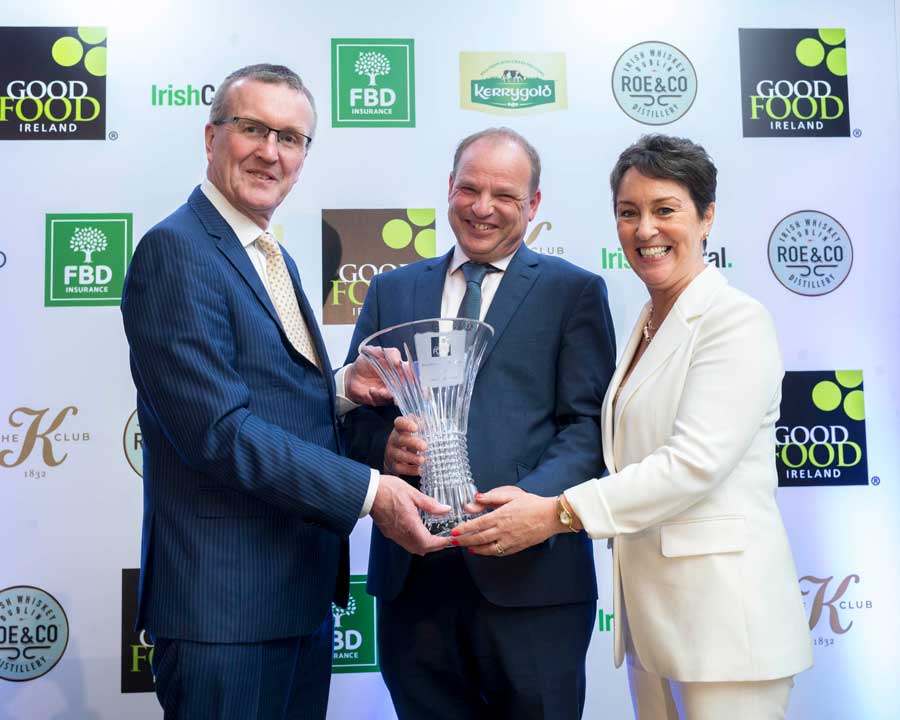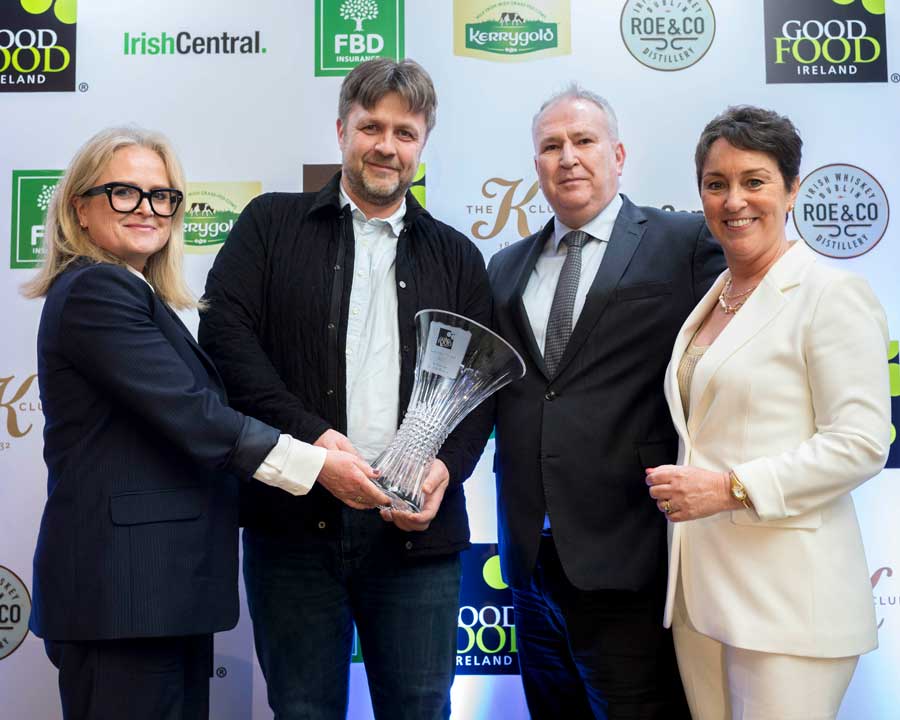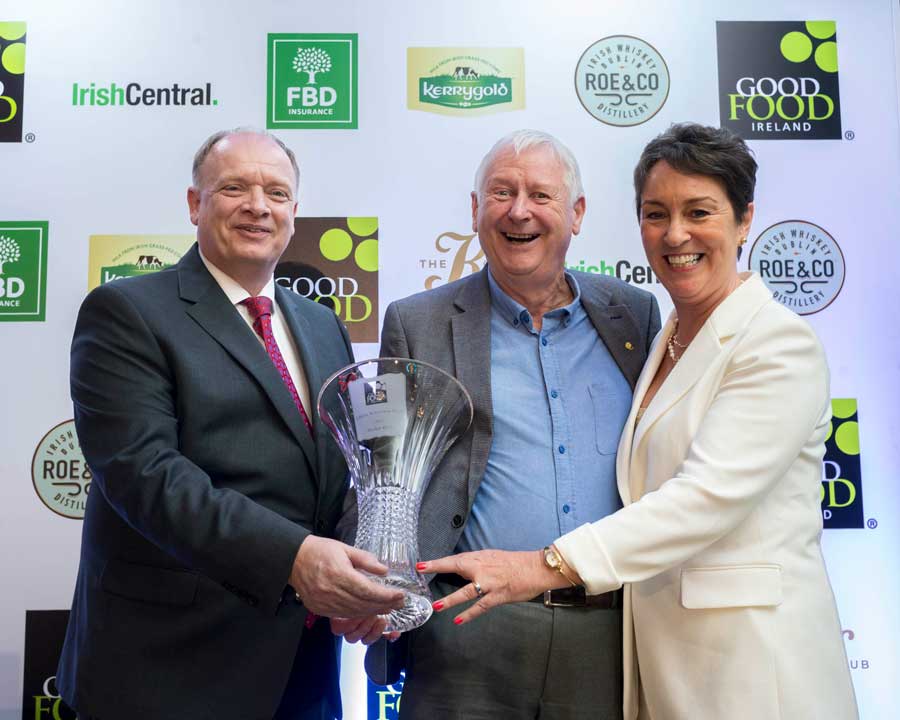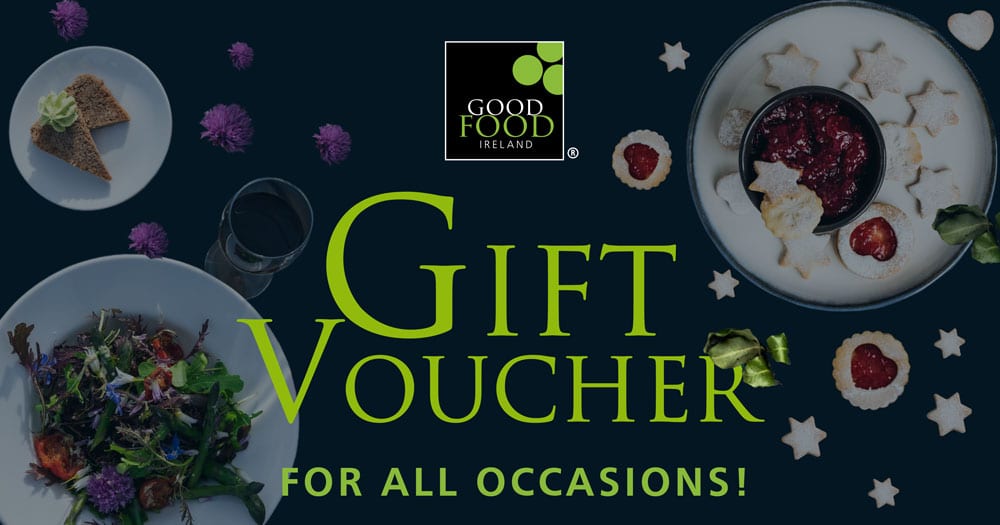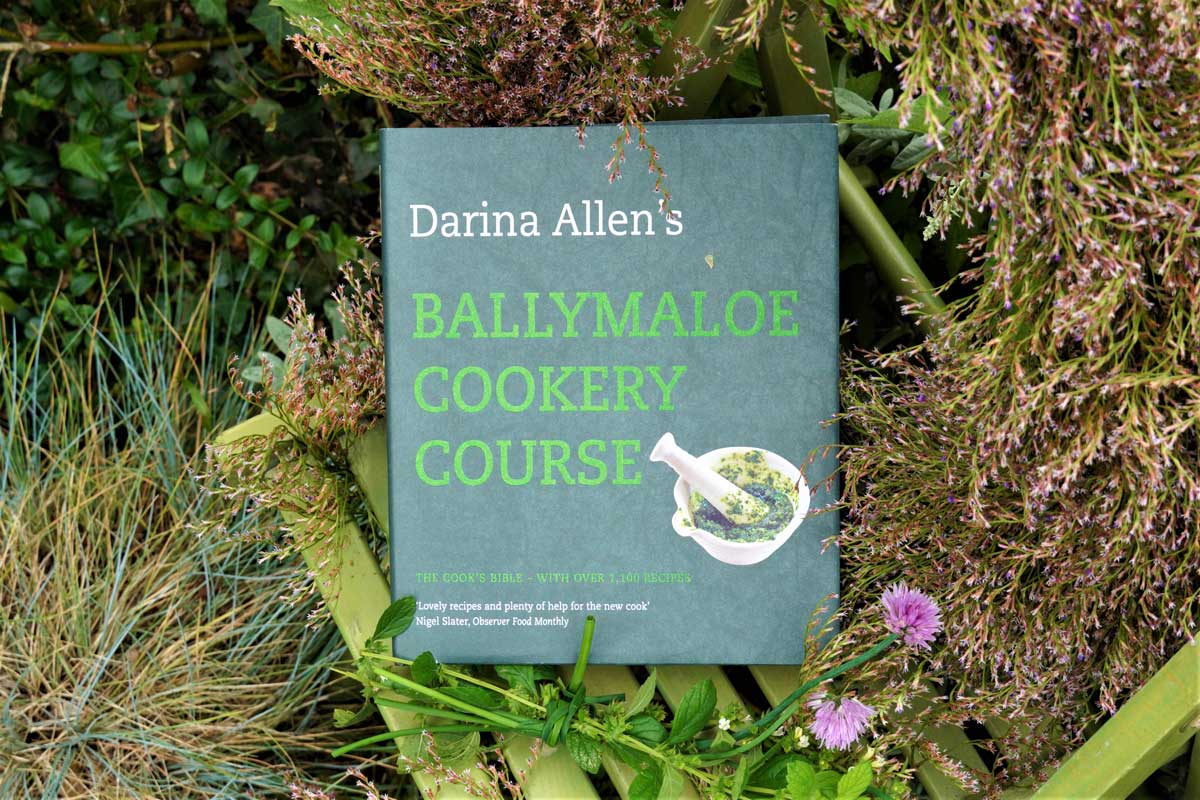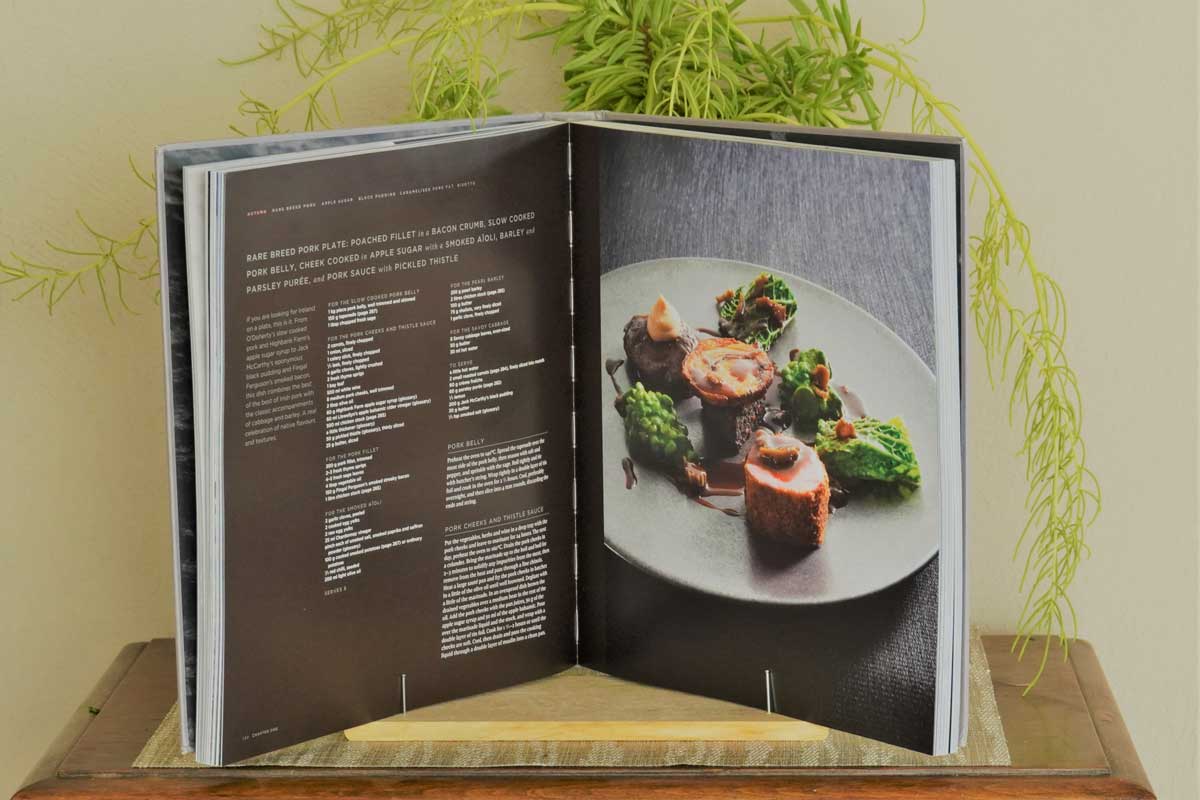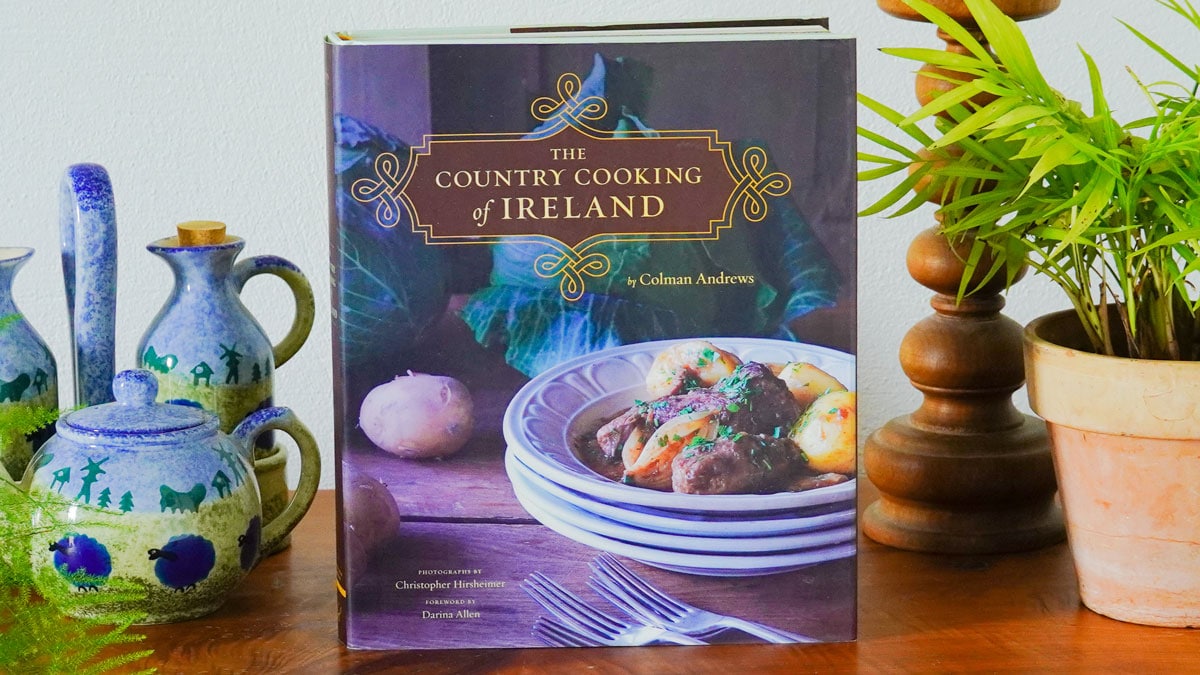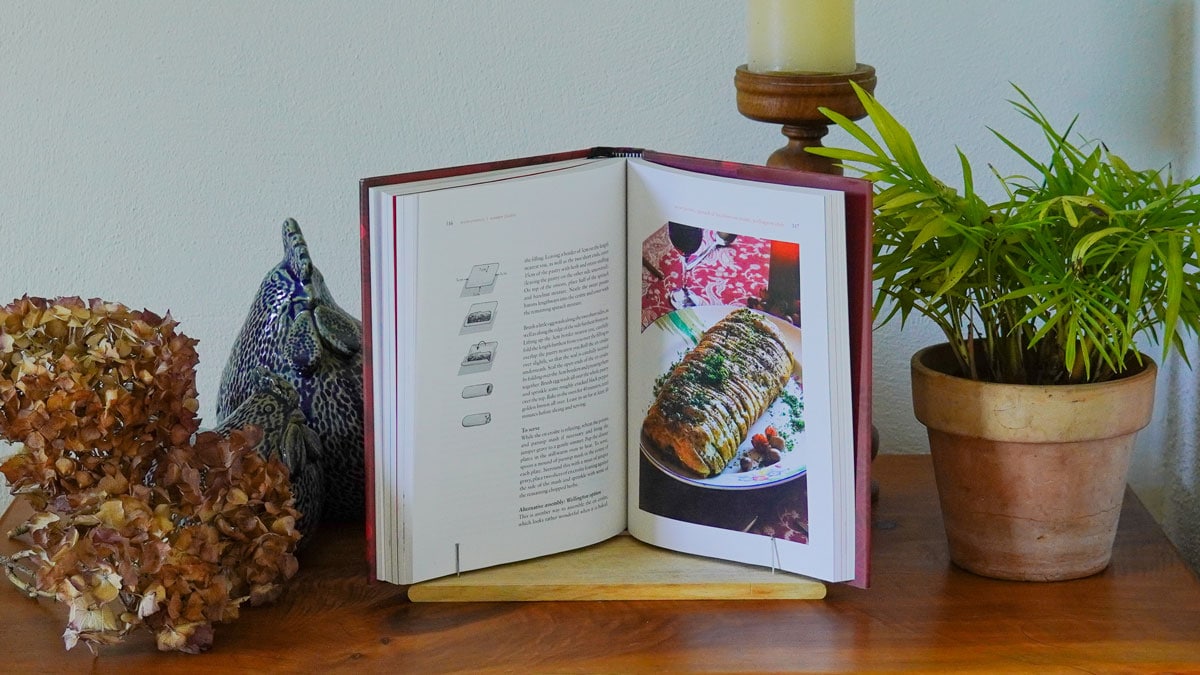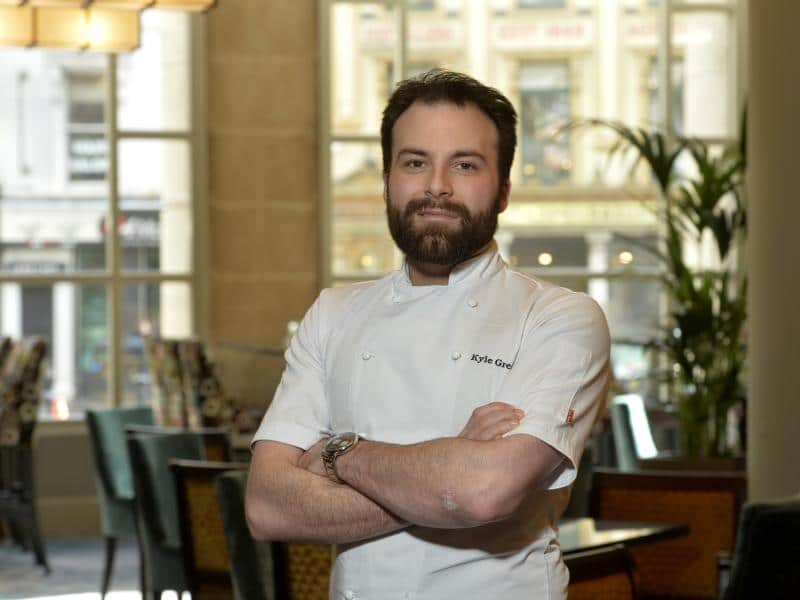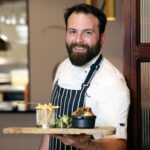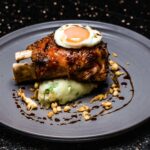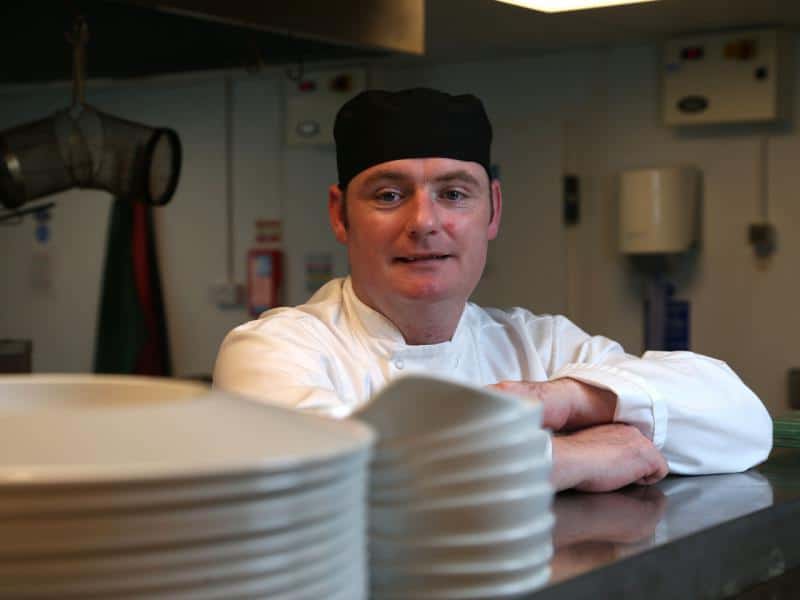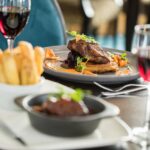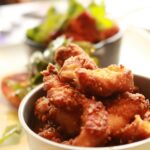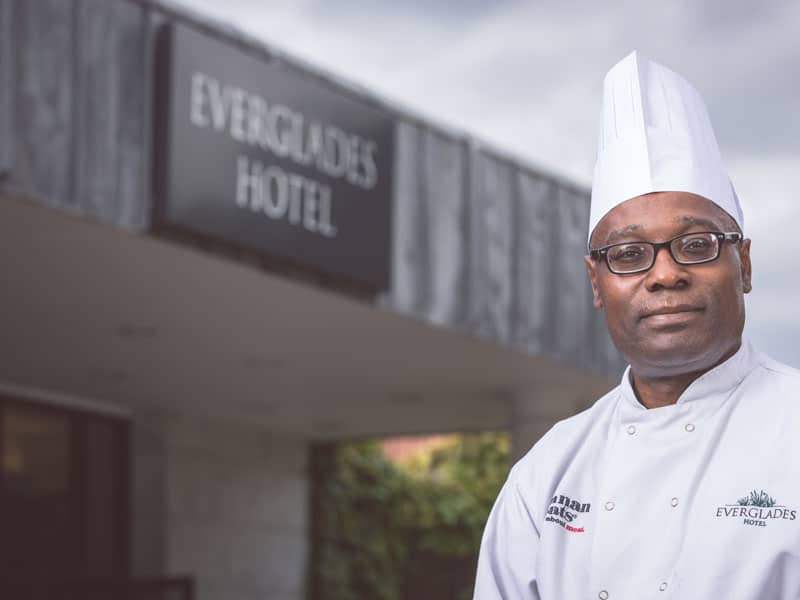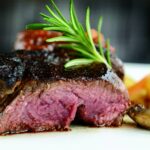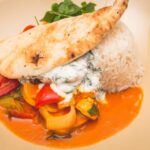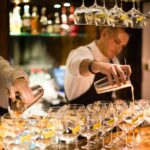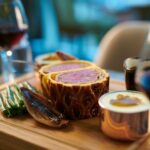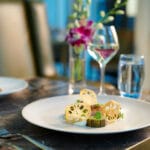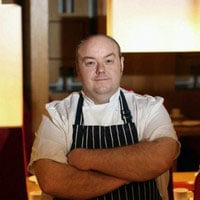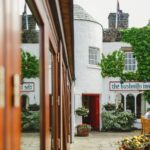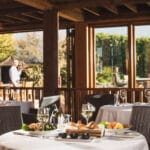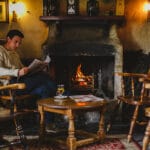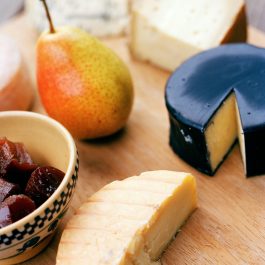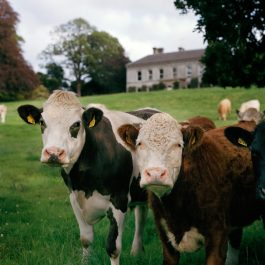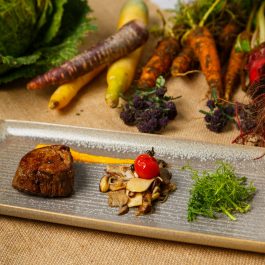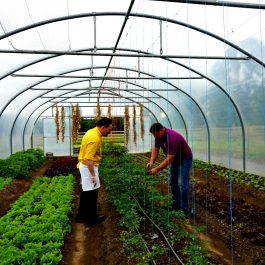The Trustmark For
Local Food & Drink Experience
Of The Island Of Ireland
Supporting Local People & Business
Good Food Ireland® is built on sustainable principles, a commitment to prioritising local Irish ingredients, supporting Irish farmers, food producers and fishermen, benefiting local communities and safeguarding the future livelihoods of local people. All businesses are inspected by our team to ensure we meet our promise to you – premium food and drink experiences of the island of Ireland.
Choose from our collection of restaurants, hotels, country houses, pubs, cafes, cookery schools, food shops from butchers to bakers, food producers and even more, all who have achieved the Good Food Ireland® seal of approval.
Irish ingredients
Sustainability
Certified Quality
diverse Range
Brand endorsement
Trustmark
Announcing good food ireland® awards 2024
November 11th 2024 - The K Club, co. kildare
Launched by Minister Heather Humphreys T.D., Minister for Rural & Community Development
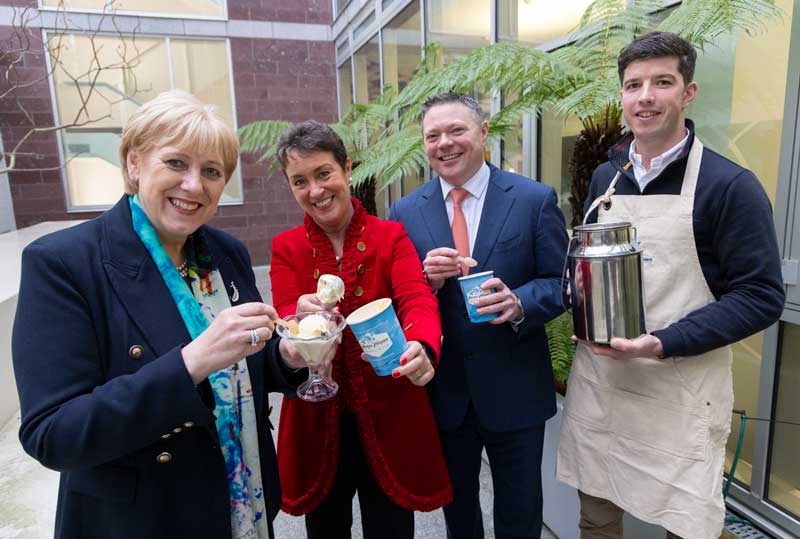
Good Food Ireland®
Award Winners 2023
April 17th 2023 - The K Club, Co. Kildare
The Versatile E-Gift Voucher
The perfect gift for any occasion offering the freedom to choose from any of our exciting online products from a delicious Irish Artisan Chocolate Hamper to a Romantic Getaway
Gift  Vouchers
Vouchers
The Good Food Ireland® Gift Voucher can be redeemed in our approved collection all over Ireland. Dine out in any of our restaurants, take a gourmet getaway in one of luxury hotels, castles or country houses, or feast on some delicious local food and drink from Ireland’s premium Makers or Speciality Food Shops.
For Corporate or Bulk Orders don’t hesitate to get in touch with us directly.
ONLINE SHOP
We know our food and our people. All products and experiences have been carefully selected from our approved collection, so you can be assured of a premium, authentic Irish experience.
Discover our Food Hall, Gourmet Getaways, Food & Drink Tours & Tastings, our range of Food Books and Cookbooks exclusively from Irish Chefs and Authors. We have also partnered with Irish designers to bring you our “Wrap up & Dine out” collection and kitchen and home ware.
If you can’t decide, Give the Gift of Experience with a Good Food Ireland Gift Voucher
discover the Good Food Ireland® collection
Local Food, Culture, Authenticity, Sustainability and Biodiversity have all long been featured at the core of Good Food Ireland®. Discover our collection of hotels, restaurants, cookery schools, shops and producers all over the island of Ireland that share our values and passionate commitment to prioritising Irish ingredients, supporting Irish farmers, food producers and fishermen. Be assured you will truly experience the best of Ireland’s local food and drink, discover a cultural heritage and connect with local people, hear their stories and age-old traditions.
The Merrion Hotel
If you have a ‘things to do before I die’ list – a stay in The Merrion Hotel should be at the top. The hotel comprises four magnificent Grade 1 Listed 18th-century terrace houses and inside there are opulent interconnecting drawing rooms…Rathmullan House
Rathmullan House offers low-key luxury in gracious and elegant surroundings. Located on the shores of Lough Swilly, in stunning Donegal, Rathmullan House is home to a true Irish welcome, gorgeous gardens, beach views and delectable dining options with…Taste @ Gearoidins
Gearoidin’s has an easy, cosy feel and it is situated in one of the original buildings right in the heart of town, but it is made modern by its décor. The main focus is the dessert counter, laden with goodies all made in-house.
-
Craft Beer & Seafood Trail of Howth, Dublin
Craft Beer & Seafood Trail of Howth Perfect for the man in your life for Valentine’s Day. What better way to spend an afternoon, than eating the best locally caught Seafood in Ireland, washed down with an ample amount of local Craft Beer. Add…
€0.00 -
Galway City Food Tour & Culinary Experience
The Galway Food Tour is a 2.5-hour culinary walking tour of the city. It gives a great overview of our passionate people and our beautiful produce which combine to make Galway one of Ireland’s gourmet jewels. During the tour, you will get to experience…
€0.00 -
Good Food Ireland® Picnic for Four – Co. Clare
What You’ll Get The prelude to a great day out exploring the outdoors is having a tasty and satisfying picnic to enjoy on your travels. For families or small groups looking to explore the beauty of Co. Clare and enjoy some great local and homemade…
€0.00
The Merrion Hotel
If you have a ‘things to do before I die’ list – a stay in The Merrion Hotel should be at the top. The hotel comprises four magnificent Grade 1 Listed 18th-century terrace houses and inside there are opulent interconnecting drawing rooms…Rathmullan House
Rathmullan House offers low-key luxury in gracious and elegant surroundings. Located on the shores of Lough Swilly, in stunning Donegal, Rathmullan House is home to a true Irish welcome, gorgeous gardens, beach views and delectable dining options with…Celtic Ross Hotel
The Celtic Ross Hotel offers an enticing package of great food, hospitality and accommodation amongst the beautiful backdrop of West Cork. A lasting first impression of the Celtic Ross starts when you approach from Clonakilty and come across the causeway…
Cavistons Seafood Restaurant & Emporium
Cavistons Seafood Restaurant sits beside its impressive food hall, an emporium central to the fabric of life in Glasthule village. Fish is delivered each morning from Dublin’s best fish suppliers. Simple is the name of the game here. Fish cooking…Ballymaloe Cookery School, Shop & Cafe
Cork’s Ballymaloe Cookery School needs little introduction. The school is headed up by Darina Allen, who is passionate about Ireland’s produce and is an all-round warrior for the country’s local producers. The school is internationally…McGraths of Lismore
It’s rare that you’ll come across places quite like this traditional butcher in the heart of Lismore village, Co. Waterford, which has been in business since the 1600s. Michael McGrath is one of several generations to run this shop, now followed…
Lock 13 BrewPub
Located along the Grand Canal in Sallins, County Kildare, Lock 13 BrewPub, serves up pub grub favourites made with local ingredients as well as a wonderful selection of craft beers made on-site by the Kildare Brewing Company. The surroundings are cosy…Malone Fruit Farm & Farm Shop
The Malone Family produce soft fruit from their Co. Carlow based farm. Fresh fruits are available in summer, and frozen fruits are also available all year round for smoothies and desserts, jam making and jellies. These can be purchased from the Malone…Mr Jeffares Blackcurrants
Mr Jeffares Blackcurrants produces 100% natural cold-pressed pure juice with no added sugar, made from homegrown Irish blackcurrants at Ballykelly Farm, Co Wexford.
join our collection
Good Food Ireland was established in 2006 to link Ireland’s agri-food and tourism hospitality sectors, creating previously unexplored commercial opportunity through the collaboration of food drink and tourism.
It has effected much change in the development of Ireland’s food scene and economic benefit for industry, as well as increased satisfaction for consumers. Today Good Food Ireland is the recognised Trustmark for food lovers and travellers seeking a genuine Irish cultural experience through authentic Irish food and drink.
If you share our philosophy you are invited to join a like-minded collection of people and businesses all over the island of Ireland, passionately committed to using Irish ingredients, sustainable supporting Ireland’s farmers, food producers and fishermen .
Approval is subject to criteria and onsite inspection
MEET THE PEOPLE
BEHIND IRELAND'S FOOD
SUBSCRIBE TO OUR DELICIOUS
News 
letter
SHARE
YOUR EXPERIENCES WITH US
We love to see you enjoying our experiences! Don’t forget follow us on Instagram and tag @goodfoodireland






